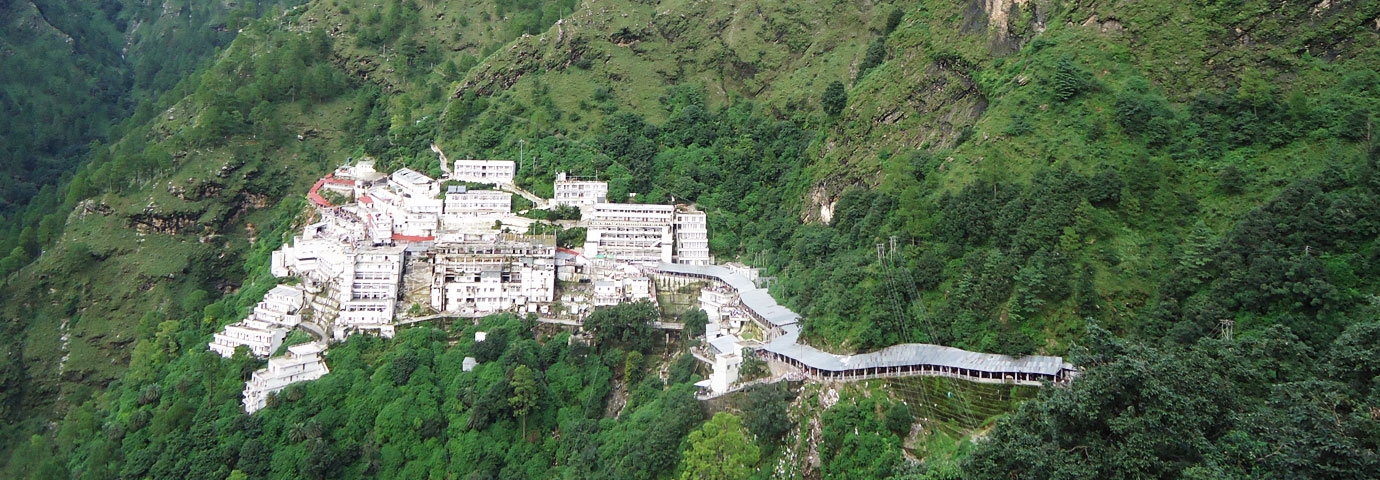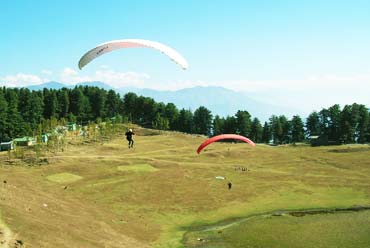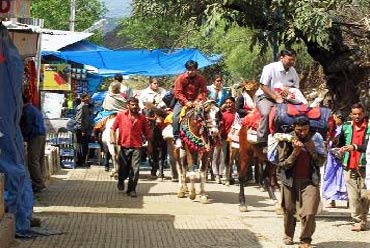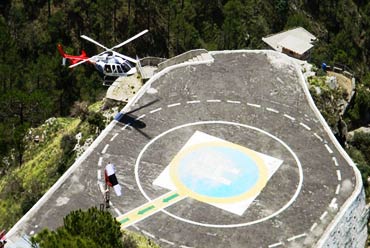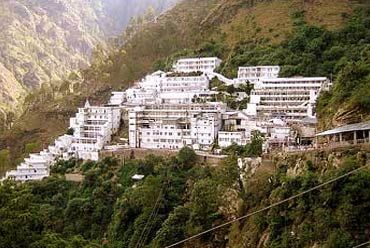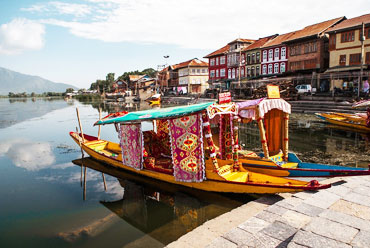Tourist Attractions in Jammu
Most of the tourists who come to the Jammu region have the Mata Vaishno Devi shrine as their destination, which is quite close by. However, the spirit of holiness permeates through the entire city, so much so that Jammu is also known as the 'City of Temples'. If Bahu Mata is the presiding deity of Jammu, the dargah of Peer Budhan Ali Shah is the other shrine that s believed to protect Jammuites. The other major tourist attraction is the Ragunath Temple Complex, which is the largest temple in North India devoted to Lord Ram. The construction of this temple was begun by Maharaja Gulab Singh in 1851 and completed by his son Ranbir Singh six years later.
The temple of Maha Kali (better known as Bahu or Bawey Wali Mata), located in the Bahu fort, is considered second only to Mata Vaishno Devi in terms of mystical power. The present temple was built shortly after the coronation of Maharaja Gulab Singh, in 1822. The existing fort, as well as the Manasabdar's palace inside it, were constructed in 1820 and are major tourist attractions of the city.
Other temples in the city include the Gauri Kund temple, Shudh Mahadev temple, Shiva temple, Peer Khoh Cave temple, Ranbireshwar temple and the Parmandal temple complex.
The most stunning site in Jammu is the Sheesh Mahal. The Pink Hall of the palace now houses the Dogra Art Museum, which has miniature paintings of the various hill schools. The museum also has the hand written Persian manuscripts of the Shahnama and Sikandernama. The palace was once the royal residence of the Dogra kings. Built as a group of buildings around a courtyard, the palace has a commanding view of river Tawi on one side and the city on the other.
The Amar Mahal Palace Museum is a beautiful palace of red sandstone, which stands amidst the most picturesque environs of Jammu. There is beautiful view of the Shivaliks in the north and river Tawi flows to the south adding to the grandeur. This was once the residential palace of Raja Amar Singh but now has been converted into a museum and is looked after by Hari-Tara Charitable trust. The museum has a golden throne made of 120 kg of pure gold.
A treat for those interested in history is the town of Akhnoor, 32 km southwest of Jammu. Standing on the banks of the mighty river Chenab, the town tells the tragic tale of the lovers Sohni and Mahiwal. Also along the riverbank are the majestic ruins of the Indus-Valley Civilization that are of great historical importance and command a beautiful view of the area around.
The Jujjar Kotli Tourist Complex, built on the banks of Jujjar rivulet, is at a distance of 35 km from Jammu. The crystal clear, cool water of Jujjar attracts picnickers in large numbers during the summer. A tourist cafeteria, a bar and a small tourist bungalow are the facilities provided here by the Jammu and Kashmir Tourism Development Corporation (JKTDC).
Places Around Jammu
The Mansar Lake, situated 60 km away from Jammu is a beautiful lake fringed by forest-covered hills. Boating facilities are available here. Another attraction here is the Surinsar Mansar Wildlife, named after the two lakes on each corner of it. The sanctuary is spread over an area of 98 sq km and is home to species like the goral, wild boar, barking deer, leopard and a multitude of birds like, black partridge, red jungle fowl, peafowl, gray partridge, green pigeon, blue rock pigeon, Rufus turtle dove etc. Besides these, the forest area also houses some rare species of trees and orchids.
The small town Katra is 50 km away from Jammu and serves as the base camp for those visiting the holy shrine of Mata Vaishnodevi in the Trikuta Hills. The shrine can be reached on foot after traversing a 12 km long well laid footpath. Every year, nearly four million pilgrims pass through Katra on their way to the shrine. Accommodation in all the ranges is available for the pilgrims.
Kud is at a distance of 106 km from Jammu. This popular resort is situated on the Jammu-Srinagar highway, at an altitude of 1,738 meters. An ideal picnic spot, this place has a beautiful climate. Heavy woolens are required in winters while light/medium clothing is required in summers here. It is a very well developed hill station in the Udhampur district.
Patnitop is 112 km from Jammu. This famous hill resort is perched on a beautiful plateau, at an altitude of 2,024 meters across which the Jammu-Srinagar Highway passes. Enveloped by thickly wooded forests, Patnitop offers beautiful picnic spots, peaceful walks and breathtaking views of the mountains and the Chenab basin. In winter, the resort is generally covered with a thick blanket of snow thus providing opportunities for various adventure sports like skiing.
Sanasar is cup shaped meadow surrounded by gigantic conifers, situated at a distance of 119 km from Jammu. The right place for a quite holiday, the meadow has now been developed as a golf course. It also provides facilities for paragliding.
Batote, 125 km from Jammu, is situated at an altitude of 1,560 metres on the Jammu-Srinagar National Highway and is a popular health resort. Due to the panoramic view of the scenic areas around and the facilities provided for the tourists, this place is a favorite with travelers.

